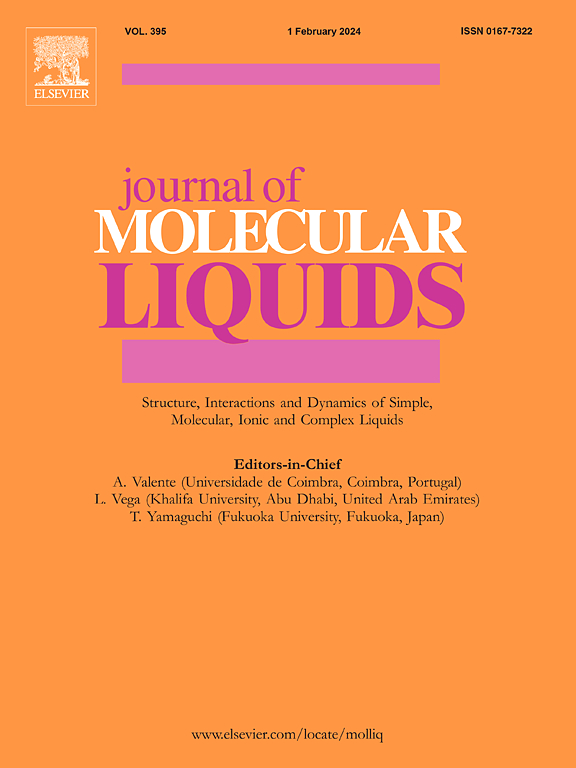Synthesis, characterization, cytotoxic investigation of curcumin-based 4-phenylchromene derivatives and study of DNA interaction using experimental and computational methods
IF 5.3
2区 化学
Q2 CHEMISTRY, PHYSICAL
引用次数: 0
Abstract
Curcumin exhibits a distinctive anti-proliferative effect on various malignant tumors. However, its limitations, such as low bioavailability and poor aqueous solubility, have led to the development of different curcumin analogs. In this study, thirteen curcumin-based 4-phenylchromene compounds were synthesized as ligands through nucleophilic additions involving curcumin, 3-dimethylaminophenol, and various aryl aldehydes. The structures of these synthesized compounds were verified using FT-IR, 1H NMR, 13C NMR, and MASS spectral data. Their cytotoxic effects were assessed using the MTT assay on A2780 (ovarian cancer) and Hela (cervical cancer) cell lines. Additionally, FT-IR, fluorescence, UV–vis spectroscopy, and molecular modeling studies were conducted to investigate the interaction between selected ligands and calf-thymus DNA. Among the compounds, L3 emerged as the most toxic ligand, with an IC50 ranging from 4 to 4.5 µg/mL, and was found to bind to CT-DNA in a groove-binding mode with a binding constant of 3.98 × 103 M−1.

求助全文
约1分钟内获得全文
求助全文
来源期刊

Journal of Molecular Liquids
化学-物理:原子、分子和化学物理
CiteScore
10.30
自引率
16.70%
发文量
2597
审稿时长
78 days
期刊介绍:
The journal includes papers in the following areas:
– Simple organic liquids and mixtures
– Ionic liquids
– Surfactant solutions (including micelles and vesicles) and liquid interfaces
– Colloidal solutions and nanoparticles
– Thermotropic and lyotropic liquid crystals
– Ferrofluids
– Water, aqueous solutions and other hydrogen-bonded liquids
– Lubricants, polymer solutions and melts
– Molten metals and salts
– Phase transitions and critical phenomena in liquids and confined fluids
– Self assembly in complex liquids.– Biomolecules in solution
The emphasis is on the molecular (or microscopic) understanding of particular liquids or liquid systems, especially concerning structure, dynamics and intermolecular forces. The experimental techniques used may include:
– Conventional spectroscopy (mid-IR and far-IR, Raman, NMR, etc.)
– Non-linear optics and time resolved spectroscopy (psec, fsec, asec, ISRS, etc.)
– Light scattering (Rayleigh, Brillouin, PCS, etc.)
– Dielectric relaxation
– X-ray and neutron scattering and diffraction.
Experimental studies, computer simulations (MD or MC) and analytical theory will be considered for publication; papers just reporting experimental results that do not contribute to the understanding of the fundamentals of molecular and ionic liquids will not be accepted. Only papers of a non-routine nature and advancing the field will be considered for publication.
 求助内容:
求助内容: 应助结果提醒方式:
应助结果提醒方式:


